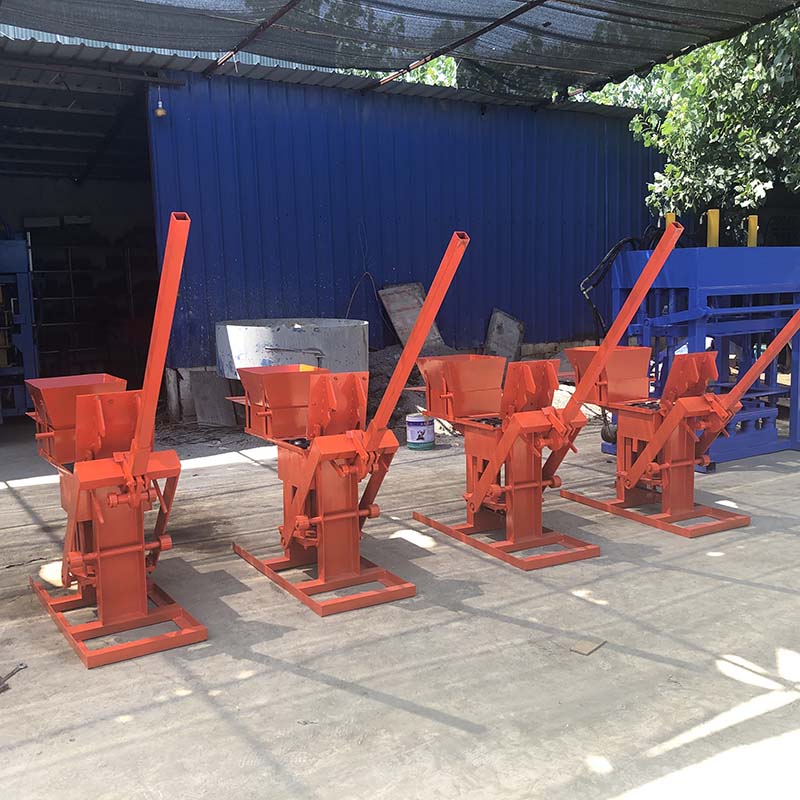
Introduction
The choice of a brick block making machine is a pivotal decision in any construction project. The diversity of machines available, each tailored to specific requirements, necessitates a thoughtful and informed decision-making process. This comprehensive article aims to guide project managers, architects, and construction professionals through the intricate process of selecting the right brick block making machine. From understanding project requirements to evaluating key features and considering industry trends, this guide covers the essential aspects that influence the decision-making process.
Chapter 1: Defining Project Requirements
1.1 Understanding Project Scale
The first step in choosing the right brick block making machine is a thorough understanding of the project scale. Whether it’s a small residential construction or a large-scale industrial project, the volume of bricks or blocks required will influence the type and capacity of the machine needed. This section will delve into the factors to consider when assessing the scale of the project.
1.2 Material Specifications
Different projects may require different materials, from traditional clay bricks to concrete blocks or even innovative materials like fly ash. Understanding the material specifications is crucial in determining the type of brick block making machine that will best suit the project’s needs.
Chapter 2: Types of Brick Block Making Machines
2.1 Manual Machines
For smaller-scale projects or projects in areas with limited access to power sources, manual machines may be a suitable option. This section will explore the characteristics and limitations of manual brick block making machines, helping readers assess whether this type aligns with their project requirements.
2.2 Semi-Automatic Machines
Semi-automatic machines offer a balance between manual and fully automatic options. This chapter will outline the functionalities of semi-automatic machines, their production capacities, and the types of projects for which they are best suited.
2.3 Fully Automatic Machines
Fully automatic brick block making machines represent the pinnacle of efficiency and productivity. This section will explore the advanced features of these machines, including automated material handling, precise molding, and high-speed production. Understanding the capabilities of fully automatic machines is essential for projects with large production demands.
Chapter 3: Key Features to Consider
3.1 Production Capacity
One of the critical factors in choosing the right machine is its production capacity. This section will guide readers through assessing the number of bricks or blocks needed per day and matching this requirement to the production capacity of different machines available in the market.
3.2 Energy Efficiency
Energy efficiency is not only environmentally responsible but also economically advantageous. Examining the energy consumption of a brick block making machine is crucial for long-term operational sustainability. This chapter will delve into the energy efficiency features to consider during the selection process.
3.3 Customization Options
For projects that demand specific brick or block designs, customization options become a significant consideration. This section will explore the flexibility of different machines in terms of mold customization, color variations, and other design elements.
3.4 Maintenance Requirements
Understanding the maintenance needs of a brick block making machine is essential for ensuring its longevity and consistent performance. This chapter will provide insights into routine maintenance practices, spare parts availability, and the overall durability of different machines.
Chapter 4: Industry Case Studies
4.1 Residential Construction
Case studies of successful implementations in residential construction projects will offer practical insights into the types of machines that have proven effective. Examining the challenges faced and the solutions provided by specific machines will help readers draw parallels to their own project requirements.
4.2 Commercial and Industrial Projects
For larger-scale projects in commercial and industrial sectors, case studies become valuable references. This section will present examples of successful machine implementations in diverse industrial settings, showcasing the adaptability and efficiency of different machines.
Chapter 5: Emerging Trends and Innovations
5.1 3D Printing Technologies
The construction industry is witnessing the integration of 3D printing technologies into brick block making machines. This section will explore the possibilities and limitations of 3D printing in brick production and its potential impact on the selection process.
5.2 Sustainable Materials and Practices
As sustainability becomes a central focus in construction, this chapter will discuss how the choice of brick block making machines can align with sustainable materials and practices. From using recycled aggregates to incorporating eco-friendly binders, understanding these trends is vital for forward-thinking projects.
Chapter 6: Challenges and Considerations
6.1 Budget Constraints
Budget considerations often play a decisive role in the selection process. This section will explore how to align project requirements with budget constraints, offering practical tips for optimizing resources without compromising on machine quality and capabilities.
6.2 Operational Space and Logistics
The physical space available for machine setup and the logistics of transporting materials and finished products are practical considerations that can impact the selection of a brick block making machine. This chapter will provide insights into planning for operational space and addressing logistical challenges.
Chapter 7: Making the Decision
7.1 Creating a Decision Matrix
To streamline the decision-making process, creating a decision matrix can be immensely helpful. This section will guide readers through the steps of developing a decision matrix, allowing them to objectively evaluate different machines based on their project-specific criteria.
7.2 Consulting with Experts
Engaging with industry experts and manufacturers is a crucial step in making an informed decision. This chapter will provide tips on how to effectively communicate project requirements, seek expert advice, and gather insights from professionals in the field.
Conclusion
In conclusion, choosing the right brick block making machine for a project is a nuanced process that involves a deep understanding of project requirements, machine functionalities, and industry trends. This comprehensive guide aims to empower decision-makers in the construction industry to navigate this process with confidence, ensuring that the selected machine aligns seamlessly with the project’s scale, materials, and long-term goals. As construction practices evolve, the right choice of machinery becomes not only a pragmatic decision but a strategic investment in the future of construction.
